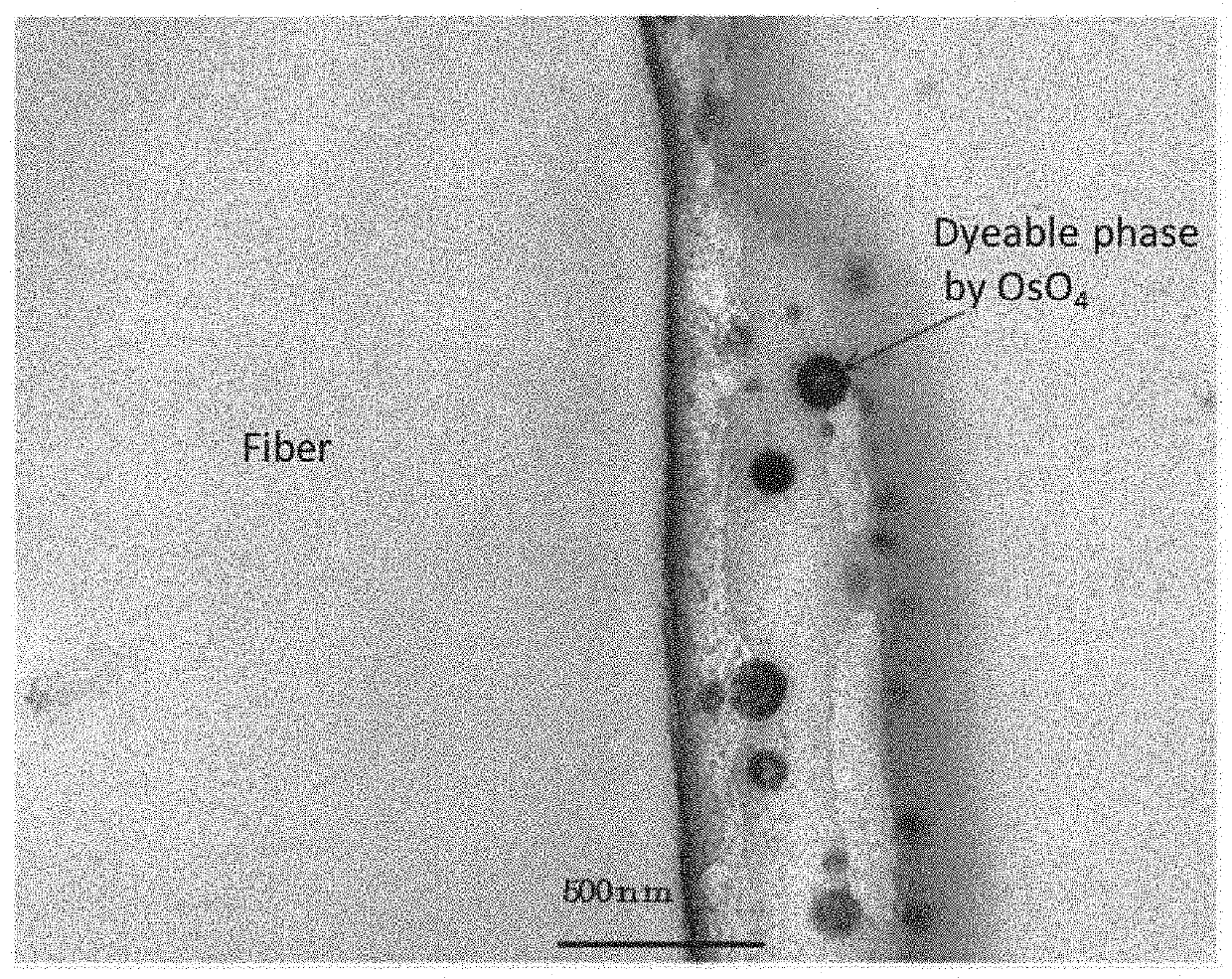Stainproof fiber structure
a fiber and stain-proof technology, applied in the direction of liquid-repellent fibres, dyeing processes, instruments, etc., can solve the problems of reducing the affinity of the fiber fabric to the washing liquid, and affecting the stability of the fiber fabric, etc., to achieve stable fiber structure, suppress the adhesion of oily soils, and provide high soil resistance
- Summary
- Abstract
- Description
- Claims
- Application Information
AI Technical Summary
Benefits of technology
Problems solved by technology
Method used
Image
Examples
example 1
[0129]A twill fabric was woven using false twisted yarns made from polyethylene terephthalate having a total fineness of 84 dtex and composed of 72 filaments as a warp and a weft. The obtained twill fabric was scoured in a scouring machine at a temperature of 95° C. by a routine method, washed with hot water, and then dried at a temperature of 130° C. Then, the twill fabric was dyed with a liquor flow dyeing machine to fluorescent white at a temperature of 130° C., washed by a routine method, washed with hot water, dried, and heated at a temperature of 170° C. to produce a white fabric.
[0130]Then, 60 g / L of (A) PARASIN KFS-100 (a fluororesin manufactured by KEIHIN CHEMICAL CO., LTD., solid content: 10%) containing perfluorooctyl methacrylate and polyethylene glycol as polymerization components, 3.0 g / L of (L) “BECKAMINE” (registered trademark) M-3 (a triazine ring-containing compound manufactured by DIC Corporation, solid content: 80%), and 0.5 g / L of (M) Catalyst ACX (a catalyst ma...
example 2
[0131]A soil resistant fiber structure was obtained in the same manner as in Example 1, except that (B) “PARARESIN” (registered trademark) NC-305 (a fluororesin manufactured by Ohara Paragium Chemical Co., Ltd., solid content: 10%) containing a fluorine-based vinyl monomer having a fluoroalkyl group having 6 or less carbon atoms and a polyalkylene glycol-containing hydrophilic vinyl monomer as polymerization components was used as the fluororesin in place of PARASIN KFS-122 in Example 1. A region of polyethylene glycol forming a plurality of circular dyed regions having a maximum diameter of 100 nm or more and 500 nm or less included in the fluorine compound was confirmed. The soil release property of the obtained soil resistant fiber structure after 50 times of industrial wash was grade 3 to 4 by gray scale for assessing staining. This is based on the same principle as in Example 1.
example 3
[0132]A soil resistant fiber structure was obtained in the same manner as in Example 1, except that (C) PARASIN KFS-150 (a fluororesin manufactured by KEIHIN CHEMICAL CO., LTD., solid content: 10%) containing perfluorooctyl methacrylate and polyethylene glycol as polymerization components was used as the fluororesin in place of PARASIN KFS-122 in Example 1. A region of polyethylene glycol forming a plurality of circular dyed regions having a maximum diameter of 100 nm or more and 500 nm or less included in the fluorine compound was confirmed. The soil release property of the obtained soil resistant fiber structure after 50 times of industrial wash was grade 3 by gray scale for assessing staining. Based on the same principle as in Example 1, the soil resistant fiber structure had both the high soil release property and washing durability.
PUM
| Property | Measurement | Unit |
|---|---|---|
| diameter | aaaaa | aaaaa |
| diameter | aaaaa | aaaaa |
| acceleration voltage | aaaaa | aaaaa |
Abstract
Description
Claims
Application Information
 Login to View More
Login to View More - R&D
- Intellectual Property
- Life Sciences
- Materials
- Tech Scout
- Unparalleled Data Quality
- Higher Quality Content
- 60% Fewer Hallucinations
Browse by: Latest US Patents, China's latest patents, Technical Efficacy Thesaurus, Application Domain, Technology Topic, Popular Technical Reports.
© 2025 PatSnap. All rights reserved.Legal|Privacy policy|Modern Slavery Act Transparency Statement|Sitemap|About US| Contact US: help@patsnap.com


